Welcome to Gyeongju, South Korea.
Gyeongju was the capital of the ancient Shilla dynasty for almost one thousand years. Now it’s a medium-sized South Korean town outshone by Seoul but mementoes of its mighty history are everywhere. There are temples, pagodas and palace ruins dotted all around urban Gyeongju and throughout the rolling green hills of the town’s rural outskirts. Most famous of all are the numerous round grassy mounds housing ancient tombs called tumuli.
Why visit Gyeongju with children?
Although little-known overseas, the powerful Shilla dynasty (57 BC – 935 AD) was an epic era of wars, invasions and huge advancements in technology and culture. There is so much to appeal to both children and adults from strolling around the huge, grassy tombs set in pleasant parkland to a magnificent museum displaying stunning artefacts and statues from the Shilla era.
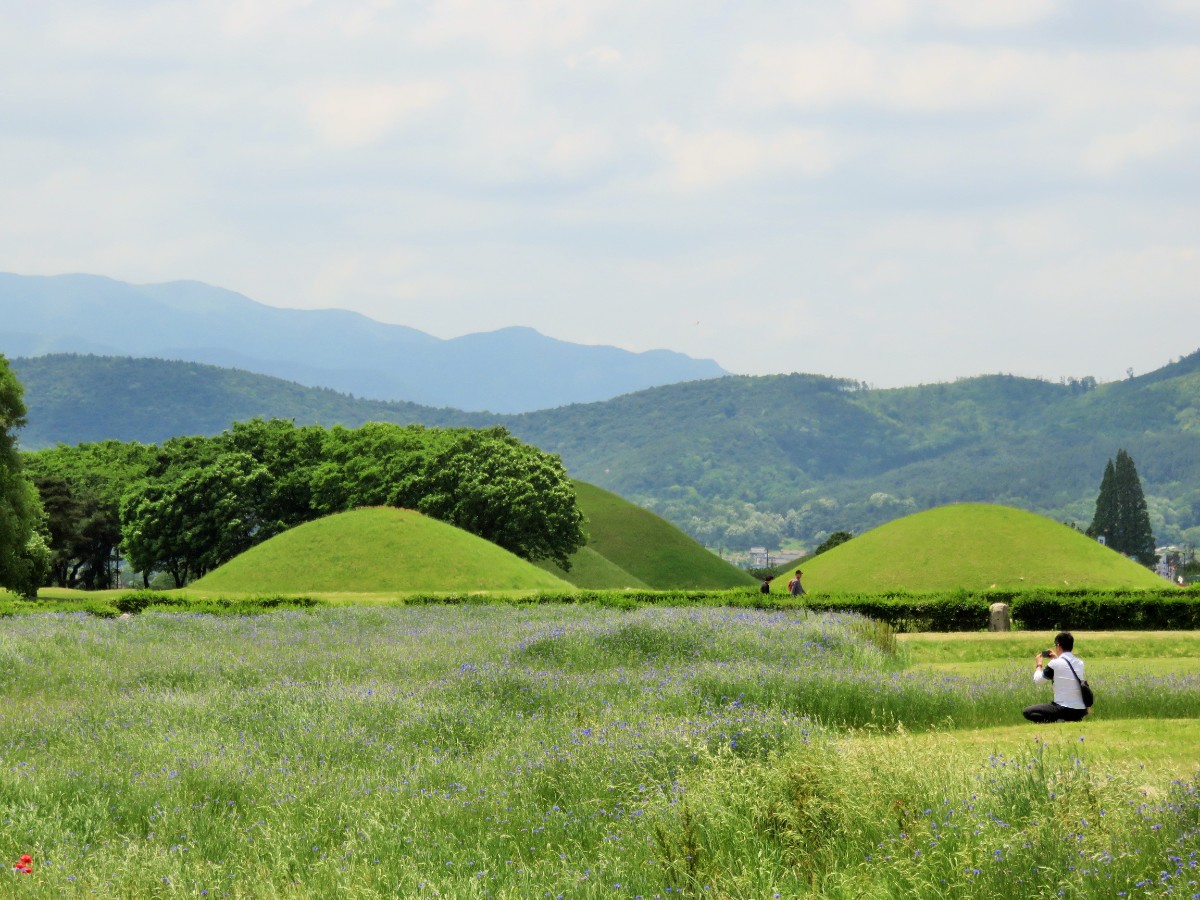
The surreal grassy hillocks are where the ancient Royal Tombs are buried
Where to stay in Gyeongju with children?
Gyeongju boasts dozens of guesthouses and international standard hotels. With young children, however, we highly recommend staying a short distance out of town (especially if you have your own transport). As Gyeongju itself is so compact, it is easy to get taxis or drive out into the countryside within minutes. We stayed at a quirky little farm with a huge garden, trampoline and café just on the outskirts which we found using AirBnB. The children loved the garden areas and being outdoors after so long cooped up in built-up Korean cities. Watching bunnies hop over the lawn in the evening and wandering around the paddy fields after breakfast were highlights.
Where is Gyeongju and how to get to Gyeongju (easily) with children?
Gyeongju is in the southeast of South Korea. Not far from Korea’s second city, Busan (and its international airport) and well-connected by rail and road to most other large South Korean cities. The super speedy KTX trains reach central Seoul in just 2 and a half hours. Our children loved riding on such fast trains seeing the scenery whizz by. Just be warned that Singyeongju Station (where the KTX and SRT high-speed trains leave from) is around 30 minutes drive out of town.
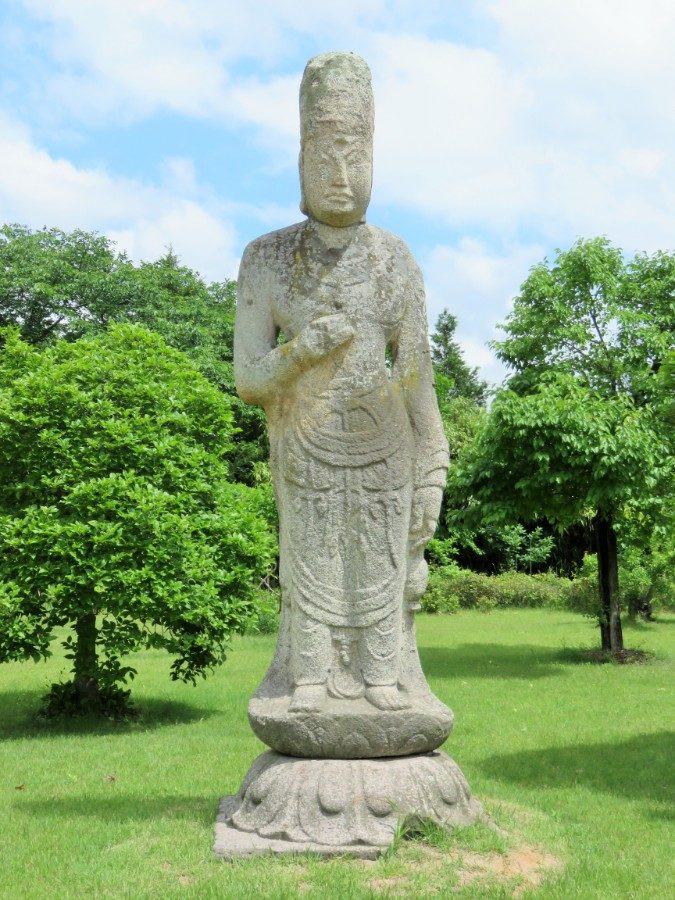
The ancient artefacts inside and outside Gyeongju museum were incredibly impressive
An Amazing Woman from History: Queen Seondeok of Silla
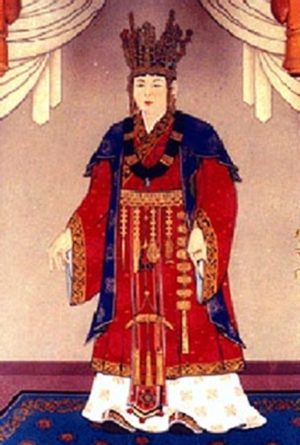
Queen Seondeok of Silla. Image in public domain via Wikimedia Commons
Queen Seondeok of Silla was the first Queen of the Silla Dynasty.
As a young princess, she had to argue for her right to the crown (her father wanted to give it to his son-in-law) at a time when few men wanted to see a woman in power. A resilient woman with great resolve, she survived assassination attempts by men who couldn’t bear to see women in such a high position.
As Queen, she easily proved her worth and throughout a dramatic reign, as her armies fought to keep the Three Kingdoms safe, she helped revive Silla Arts and Literature. It was during her reign that many of the most-visited sites in Gyeongju were built such as Cheomseongdae, the astrological tower we visited, and the famous Hwangnyongsa Temple at the time an impressive feat of architecture at 80m tall.
Queen Seondeok often used her power to help her subjects. She won the hearts of many people by giving peasants a year’s tax exemption. Despite her popularity, many male rulers in other kingdoms refused to acknowledge her role.
Described in the Samguksagi (an ancient Korean text) as generous, vicious, wise and agile, Queen Seondeok was an inspirational Korean woman. Learn all about her and her achievements on your trip to Gyeongju.
Our 1 day Gyeongju Itinerary: Perfect for Families with Young Children
An educational morning in Gyeongju with children
Our visit to Gyeongju started at the Gyeongju National Museum. It is an absolutely fabulous museum and will give you a comprehensive overview of the Shilla dynasty history in a few hours. Outside there are ancient statues and stones beautifully presented with a lovely backdrop of forest-covered hills. A great place for toddlers to burn off some energy. Inside are exhibitions halls of Shilla jewellery, weaponry, Buddhist artwork as well as signs in English and Korean chronicling the city’s history.
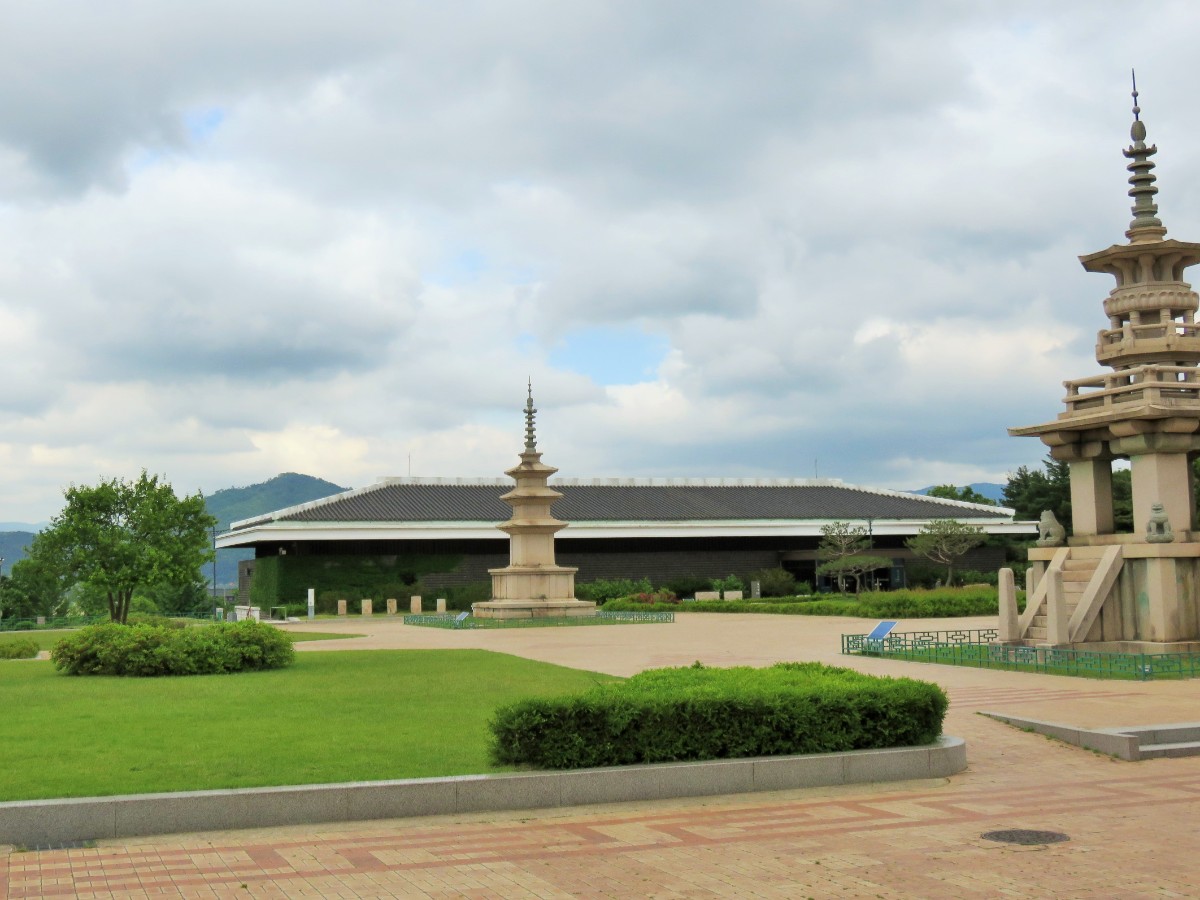
The grounds of Gyeongju museum are pleasant to walk around and there are many ancient artefacts in the gardens.

Gyeongju museum is so good that H and Zizi were kept interested on the way around.
For children, there is an excellent children’s museum which presents a simple and engaging child-friendly overview of Shilla history. Fun, interactive exhibits show children what the inside of tombs look like, what the kings and queens wore and children can try their hand at indoor archery (no sharp arrows involved!). If the children are desperately hungry and thirsty, there’s a convenience store right outside. An added bonus is the Gyeongju National Museum is FREE. Yipee!
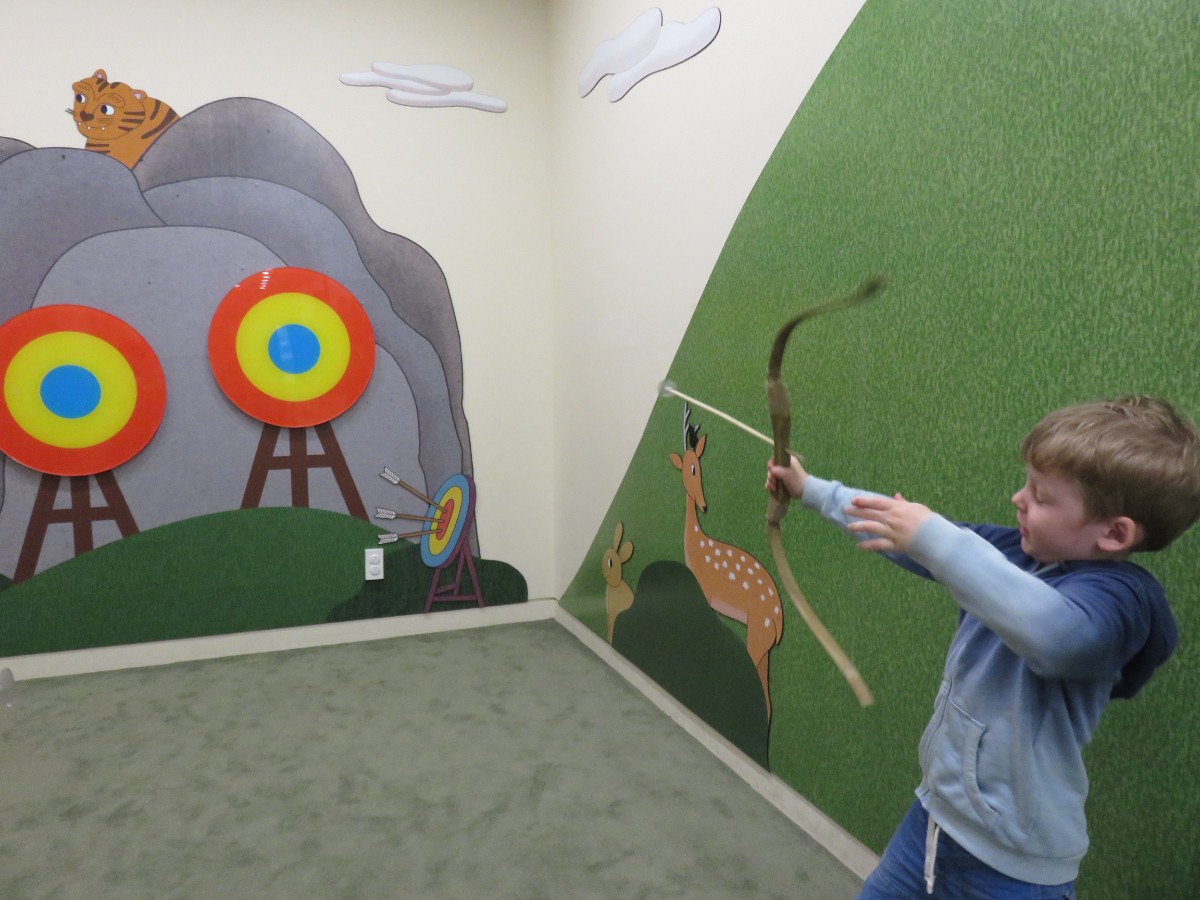
The Children’s Museum attached to the main Gyeongju historical museum was awesome – H and Zizi had a fantastic time there.
An awesome afternoon in Gyeongju with children
Walking from the museum towards Gyeongju town, there is a great little video show (look out for a small hut at the entrance to Wolseong Park and across from the palace). The children were enthralled by the short, action-packed, educational CGI documentary. There were subtitles in English although our young ones were too young to read them. The grandiose classical soundtrack and fast-paced images set to dramatic music had them gripped and brought to life some of the sights we were about to see.
Having educated ourselves about this lesser known (in the West) royal dynasty, we strolled along to Wolseong Park (about 20 mins total from the museum) where we saw our first of many tumulis (the grassy, round tombs that resemble something from Teletubbie Land). As it was a Sunday, there were countless Korean families out enjoying the sunshine and sights. Girls dressed in full hanbok (gorgeous traditional Korean dresses) posed coyly in front of every flowerbed and monument.
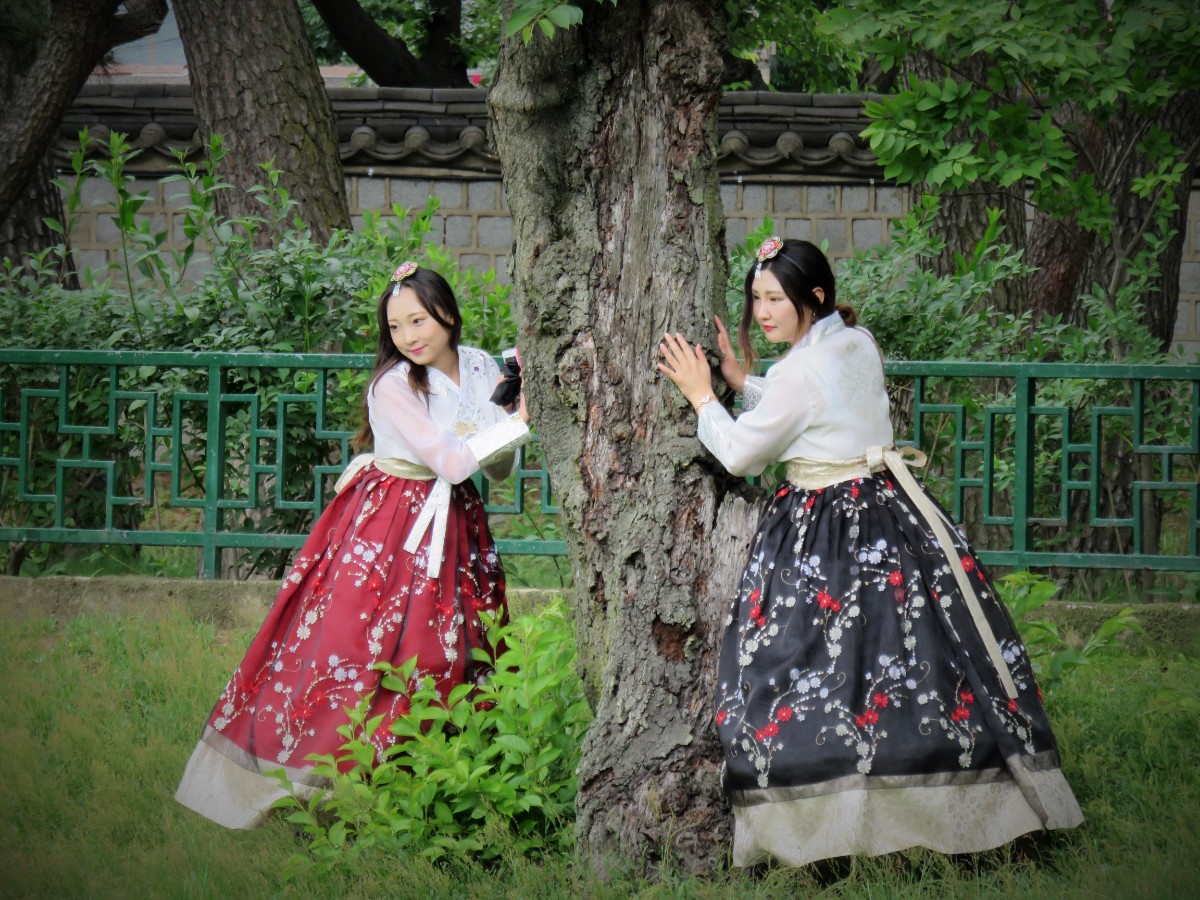
Korean women in traditional Hanbok costumes pose all over Gyeongju, adding to the mystique around town.
Right in the centre of the park is the famous Cheonmaseongdae Observatory (built in the reign of Queen Seondeok). Although the structure looks deceptively like a simple, stone tower it actually symbolises quite complex astrological concepts. The tower has 30 layers (representing each day of the month) and 366 stones were used to build the tower (that’s right- representing the number of days in the year). If little legs are tired, you can rent scooters, bikes or ‘tuk-tuks’ to ride around on. Wander to the end of the park to find somewhere nice for lunch or grab some kimbap rolls for a yummy picnic in the park.
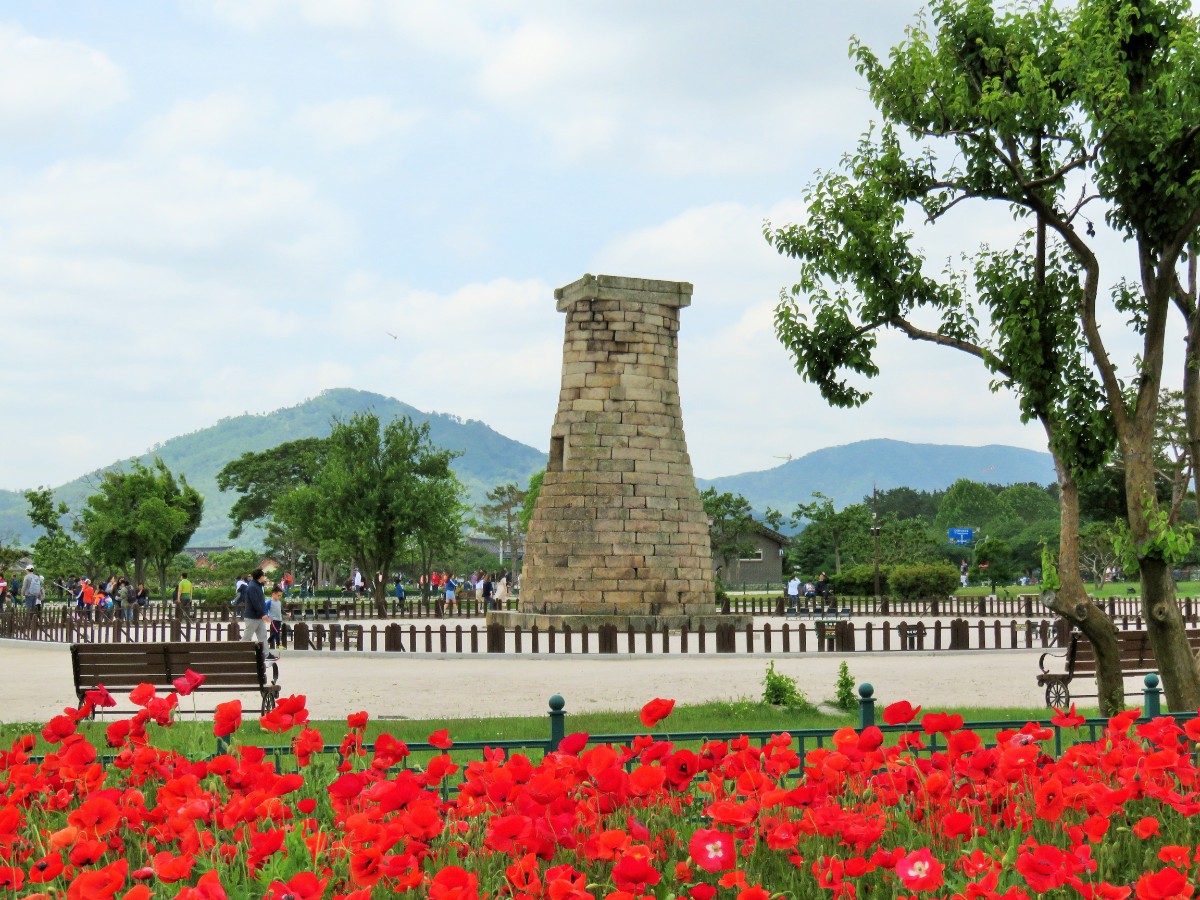
The ancient observatory is built from 366 stones, with 30 rows. Anyone guess what it’s a physical representation of?
FAMILY TRAVEL TIP: We love kimbap rolls. When I lived in South Korea (many years ago) they were my super, cheap and easy lunch choice. Kimbap is rice wrapped in seaweed and filled with different pickles, meat, omelette and vegetables. A bit like Japanese maki rolls. My all-time favourite is chamchi kimbap (tuna kimbap) which the kids absolutely loved too. A brilliant, cheap and nutritious meal for kids when travelling in Korea it packs in protein, vegetable and carbs. It usually costs W2000 or about US$2. Most small cafes sell handmade rolls but convenience stores everywhere also sell mass-produced versions. You guess which is better!
We spent the rest of the afternoon strolling through Tumuli Park – a walled, peaceful park containing the 23 grassy tombs of members of the Shilla royal family. Like Egyptian pyramids within the earthen tombs were chambers containing the remains of monarchs and copious treasures – many of which we had seen earlier at the museum. Normally, there is a small entrance fee to this site because you can enter one of the tombs Cheonmachong unfortunately for us the tomb was closed when we visited for restoration but on the plus side, we were allowed into the park for free.

The surreal grassy hillocks are where the ancient Royal Tombs are buried
Just across the road are the Noseo-dong Tombs, it is a really pleasant area to wander around admiring the ancient tombs and wondering what they hold inside. There may well be a small craft market and area of food trucks if you visit on a weekend or holiday. The food from the trucks smelled gorgeous – unfortunately, we’d just eaten lunch. We’ll have to wait until next time!
An exciting evening in Gyeongju with children
As our kids were a little tired and grouchy, we caught a quick taxi back to our accommodation for a little rest before dinner. If your children still have energy just meander back through Wolseong Park towards the ssambap restaurants on the park’s southern edge. We went to one recommended by our farm stay (but I think you could easily get better so check out your guidebook). Sampling a ssambap meal is a must during a stay in Gyeongju. Ssambap is a feast of small dishes served all at once. Traditionally, Koreans sit on the floor to eat although many restaurants have tables to cater for tall foreigners like Rhino. The plethora of 25 plus savoury dishes contain traditional Korean foods from fish to pickles to meats all of which you are encouraged to wrap up in salad leaves and enjoy. It is a great opportunity to try lots of different dishes – although I have to admit that the kids only ate the ham, plain steamed rice and sheets of kim (seaweed)!!!
After gorging yourselves, get your body moving with a short 10-minute moonlit walk to Donggung Palace and Wolji Pond. The restored ruins of this once great Shilla palace wrap around Wolji Pond and are attractively lit up at night. The Sunday evening that we visited there was almost a carnival atmosphere there with stalls outside selling flashing heart-shaped balloons and candy floss. Joining the crowds to meander around the pond is a great experience. The walk doesn’t take too long and is easily manageable on tiny legs. The children absolutely loved the great atmosphere, hiding in bamboo forests and of course, the flashing balloons!
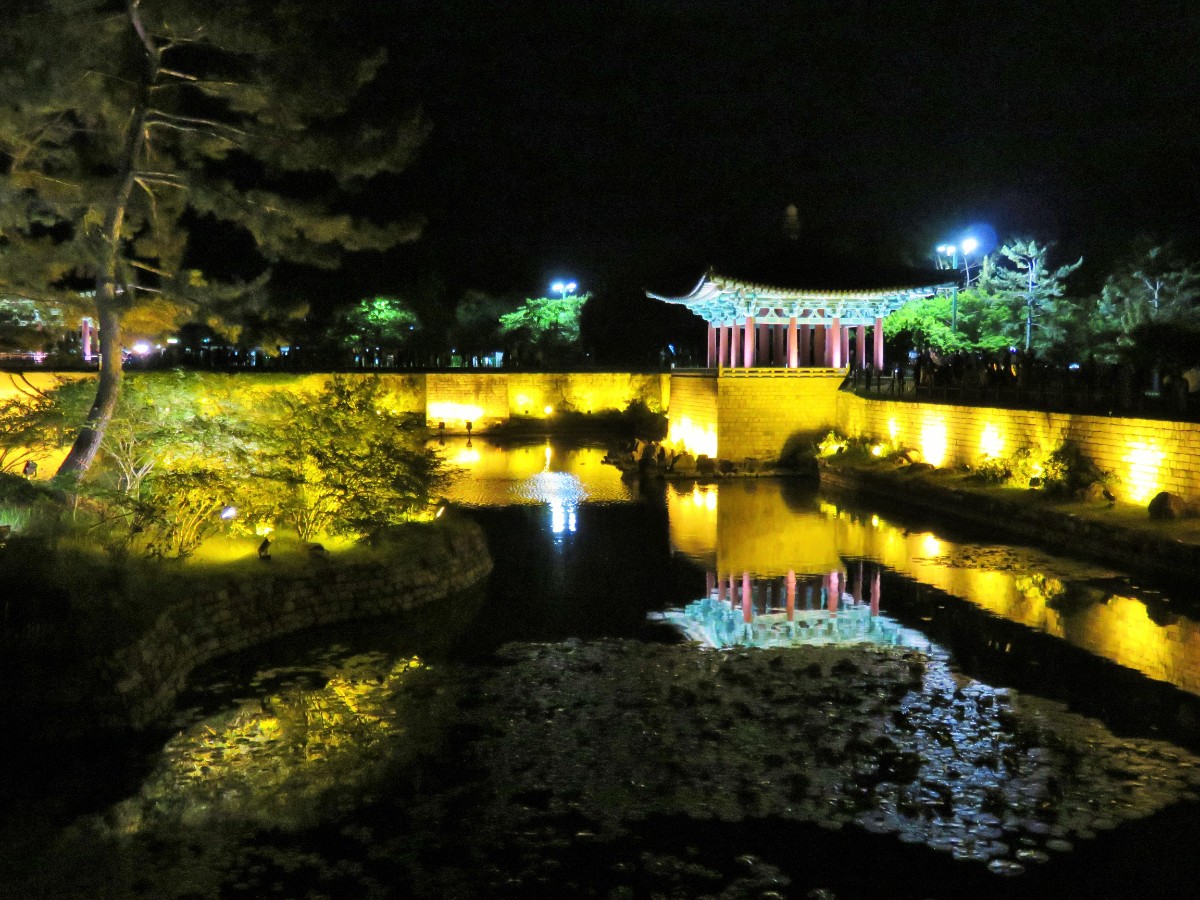
The reflections of the palace buildings and trees in the water were mesmerising and truly stunning.
How to extend your visit to Gyeongju with children
If you are lucky enough to have more than one day in Gyeongju, you are in for a treat. There are oodles more temples, pagodas and ruins to visit all around Gyeongju town as well as dozens more grassy tombs speckled around the bucolic local countryside. We’d love to go back and explore more.
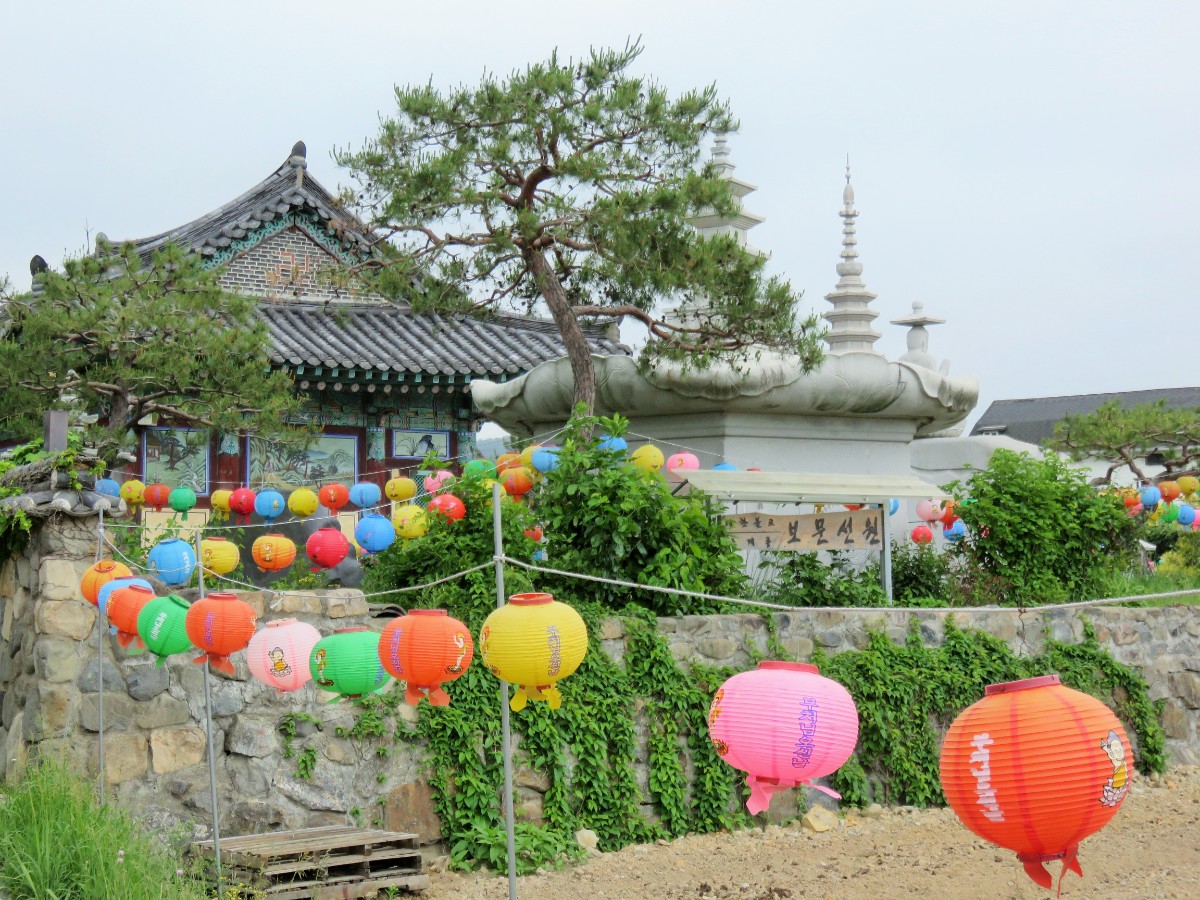
Rhino stumbled upon this temple whilst out for a countryside stroll in the villages around Gyeongju

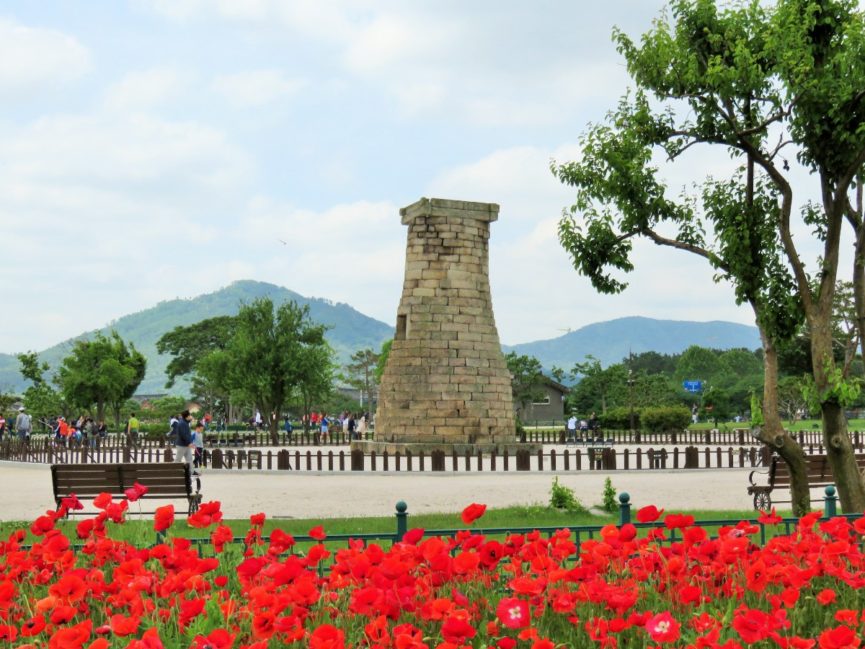

3 Comments on “A Perfect Day in Gyeongju with Children”
This looks like the most amazing place to explore – what a wealth of amazing things to discover. I’ve never thought of Korea for family travel and this has really piqued my interest #culturedkids
Thanks for reading. I’m glad that Korea is now on your list. It’s really underrated. Check out my other post on Why South Korea is a Great Destination for Families if you’d like more information.
Pingback: 21 Fantastic Family Travel Destinations with Kids Under Five - World for a Girl